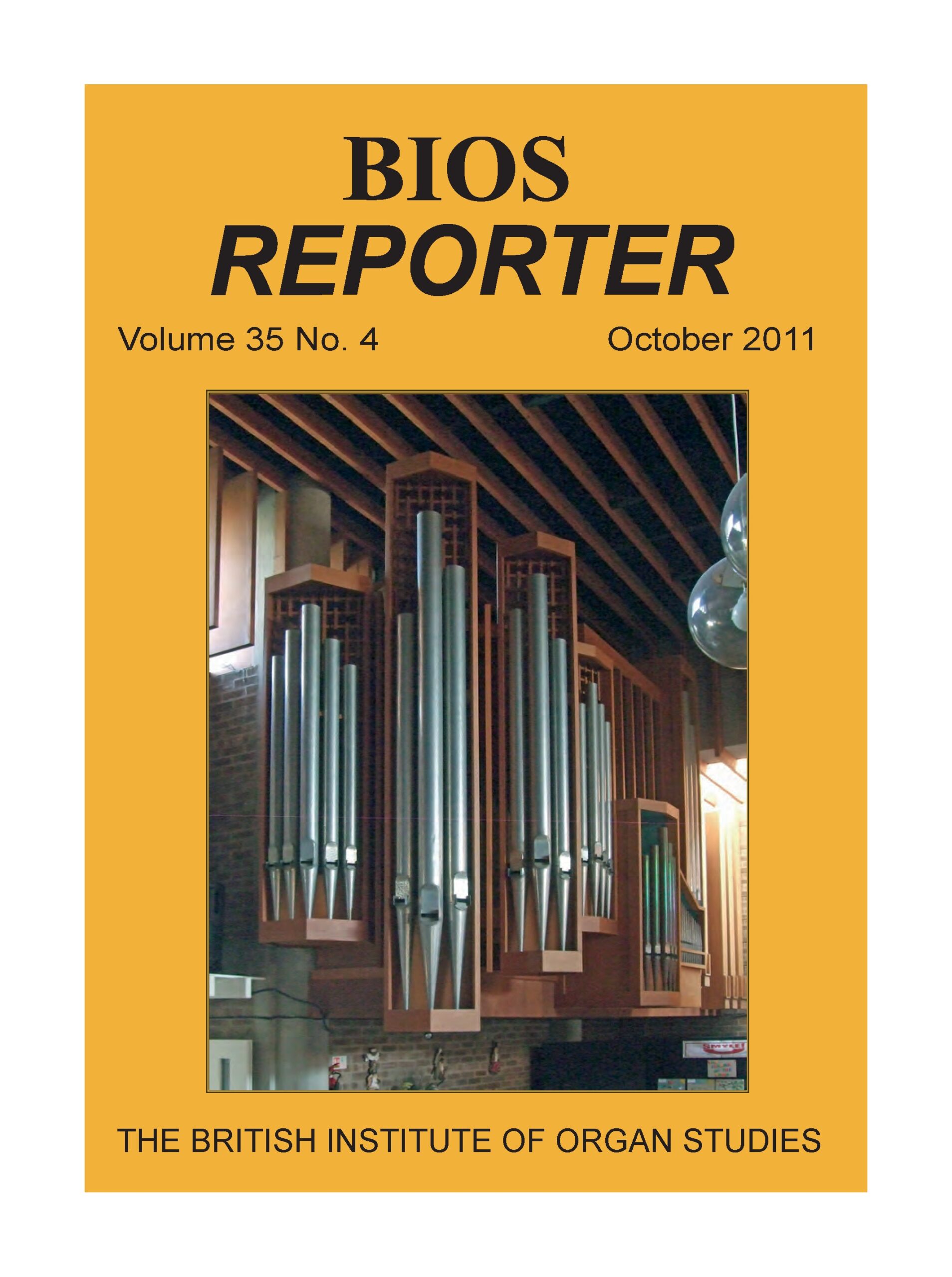Your basket is currently empty!
BIOS Reporter – Volume 35, No.4 – October 2011
The introduction of barrel organs into churches during the latter half of the eighteenth century is often seen as an ingenious solution to a practical problem, namely, a shortage of people able or prepared to play the required accompaniments to congregational worship. An obvious limitation to barrel organs was the number of hymn tunes and other pieces of music that could be made available on the pinned barrels. But, the simple turning of a handle that both pumped the bellows and turned the barrel meant that the operation of a barrel organ could be carried out by unskilled hands – at least, unskilled in comparison to playing the organ. However, one unintended consequence of the technology of barrel organs was some music could not easily be played. Anglican chanting of psalms requires anywhere from one to ten or more syllables being sung upon the same note, which means that each line of a psalm requires quite different timing. On a small barrel organ as described above, where a single handle does everything, when one stops turning to try and hold a note the wind rapidly decreases leading to comical effects. There are anecdotal reports that some ‘barrel organists’ did not attempt to alter the beat of psalm accompaniments leading to congregations attempting to fit many syllables onto single beats. On larger barrel organs where wind is supplied from a foot pedal or a separate handle, then the handle that turns the barrel can be stopped to hold a note or chord. I suspect that such a technique must have been fairly widely used over the hundred or so years that barrel organs were in churches. In short, the ability of a barrel organist to provide a musical accompaniment to Anglican chant required some fair skill, which to some extent defeated the main object of barrel organs. Now, given that barrel organs gradually disappeared from churches from 1850 onwards, you might think that this kind of discussion verges on the arcane. However, with the advent of information technology and electronic sound systems there is effectively a 21st century version of the barrel organ – namely the hymn tune CD. The number of tunes that can be put onto a CD vastly outstrips the capacity of even the most gargantuan mechanical barrel. But if the speed of the tune does not quite work for your congregation there is no handle to turn faster or slower…
